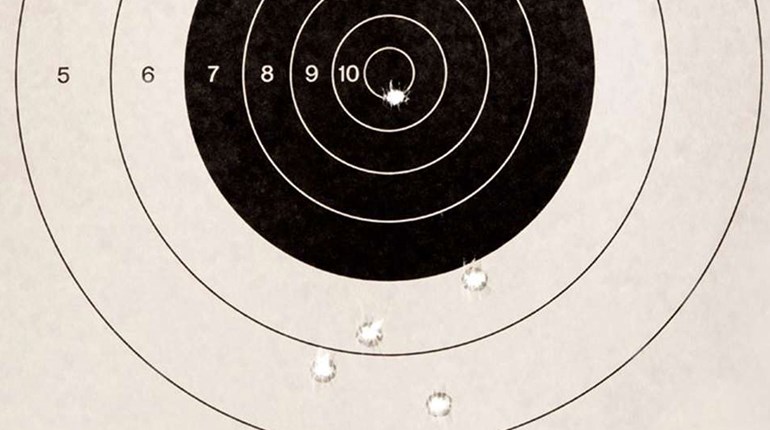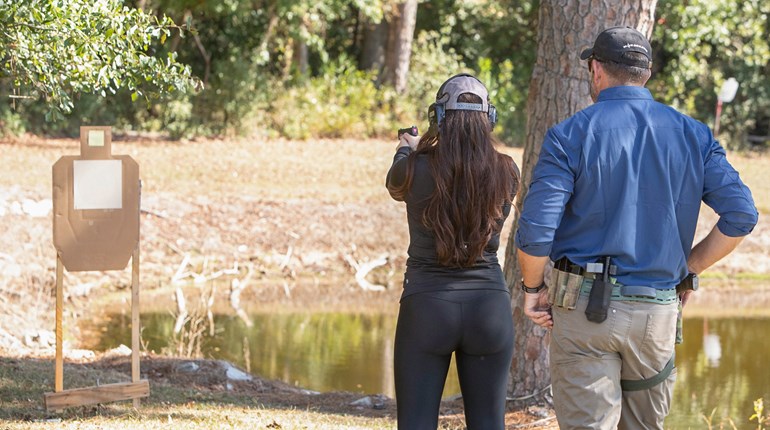
In today’s world of 24-hour news cycles, it seems that not a day goes by that we aren’t hearing about criminal violence. Crime has dropped dramatically over the past 25 years, but that doesn’t mean any of us are safe. Per the fbi Uniform Crime Report, violent crime occurs every 25 seconds in this country.
We also know that there are, on average, only about two police officers per every 1,000 citizens. Is it reasonable to believe that a police officer will show up in time to save the day during a violent encounter? Based on the number of law enforcement officers per capita, coupled with response times that can easily range from 10 to 45 minutes, of course the answer is “no.” Our men and women who protect and serve this country in law enforcement are highly respected and appreciated, but even they will tell you that they can’t be everywhere, protecting everyone at once.
Responsibly armed citizens can be a means to curtail violence on a day-to-day basis. While the so-called “mainstream” media will not show it, there are plenty of examples of armed citizens using firearms to protect themselves and others many times each day. It is not easily measurable how many lives are saved each year due to the properly trained and equipped citizen who interrupts a stream of violence, but we do know that lives are saved and violent acts are slowed down or stopped. In fact, earlier this year in Arlington, Texas, police reported: “Hero stopped mass murder by crazed bar patron who was armed to the teeth.”
Some argue that armed citizens are ineffective, and believe that society is better off if only law enforcement officers have firearms. With average law enforcement response times of more than 10 minutes in many cities, do you really want to be reliant on waiting for the police to come help, or be reliant on the ability to escape a scene before becoming a victim? I’m not saying that every single person should be armed to the teeth every day of their lives, ready and waiting to stop a threat. What I am saying, though, is that a properly trained and equipped citizen is absolutely an asset to society. Realize that there is a distinction I am making here—I am advocating the legal carrying of a firearm coupled with the proper level of training and mindset. Those who carry a firearm legally and regularly make up a demographic of law-abiding citizens who just may end up saving your life—or the life of one of your loved ones.
We have all heard the argument that there is nothing an armed citizen can do to stop mass shootings and terror attacks. This simply is not true, and a little research will show that there are many cases of armed citizens that have stopped violent crime. Armed citizens alone, of course, are not the be-all/end-all solution. We will continue to rely on our first responders in many circumstances to keep us safe and end violence. The Las Vegas concert shooting last year is a case where an armed citizen may or may not have made a material difference, but that attack was unlike most because of the proximity of the shooter to the victims. There are other examples—such as the church shooting in Texas a month later where an armed citizen was able to stop the shooter from continuing to do more harm—that prove my point.
Many of you are likely wondering what you can do to be better equipped to confront and stop a violent attack. The answer: Train, train, train. That’s easier said than done, of course. Training needs to be multifaceted, not just focused around your ability to accurately shoot a firearm. Factors that come into play that we must consider beyond firearm proficiency are things like the decision-making process, ability to perform under stress and risk analysis/acceptance of risk. Realize that these topics can each have a book written about them. But here I will give you some brief ideas on how you can immediately start to better prepare yourself in these critical areas.
Firearms Training
One of the top training mantras is “The best do the basics better.” Continue to practice the fundamentals of shooting a handgun, along with the ability to access the gun quickly from various levels of concealment. Fundamentals can be practiced at home, doing dry-fire draws/drills. A couple of great additions to in-home dry fire with your carry gun are training with a Next Level Training sirt pistol, and/or training with an Ultimate Training Munitions (UTM) conversion kit, using both blank rounds and marking rounds on a designated target. By becoming very proficient in your fundamental skills, you will be better able to perform other tasks, such as effective and quick decision-making under stress. You don’t want to be concerned with grip and trigger squeeze when bullets are flying, so master those fundamentals now. Get to the range and shoot your gun, and don’t forget to train occasionally with the actual defensive rounds that you carry in your firearm while in public. You must know how your defensive ammunition feels and functions in your carry gun.
For training, think “frequency over duration,” meaning it’s better to get to the range a few times a month for 20 minutes a session than going to the range every couple of months for a few hours. If possible, take firearm training, and try to expand your training beyond your local indoor range. Get outside and move around while shooting when you are ready and able to do so—start out doing this in a safe and controlled manner with appropriate instruction. Each individual needs to know his or her limitations with a firearm—being presented with a violent threat and wondering if you have the ability to engage safely is not a good situation. Know your weapon and its limitations, know your threat, and know your true ability. Real life is not Hollywood—you can’t expect outcomes that you may have seen on a movie screen. And remember: “We do not rise to the level of our expectations, we fall to the level of our training.” – Archilochus.
Decision-Making Process
In a violent encounter, fractions of a second count. You want to be able to make effective decisions quickly and with care. Mental exercises will help you accomplish this. Start running through what-if scenarios in your head as you go about your day-to-day life. For each environment you encounter, you should be noticing where the exits are, determining where areas of cover and concealment are, and visualizing how you would react if you had to escape or engage a threat. These visualizations are essentially the ‘dry-fire’ version of analysis and decision-making, which better equip your mind to handle a real-life scenario.
Further, you can help with your mental training and decision-making while on a shooting range practicing your firearms training. Do this by using various targets that enable you to identify and engage a series of different targets. Perhaps this is done through a series of shapes, colors or numbers. You can also ask another person to call out certain targets, which forces you to search for and identify a “threat” before engaging. When doing this, be sure to notice where your muzzle is when you are searching for your target—you don’t want to point your muzzle at anything you are not willing to shoot, kill or destroy.
Ability To Perform Under Stress
It goes without saying that if you are presented with a dangerous or violent encounter, your mind and body will be stressed, or at least they will be operating differently than when you are sitting and reading this article. Inducing stress into our firearms and mental training is crucial. We need to understand how we might perform differently under stress, both mental and physical.
There are various ways you can introduce stress to your training. An easy way to start is using a shot timer. A simple “beep” and knowing you are under a timer will induce some stress, especially if you have not shot under a timer before. Beyond that, you can do things like introduce physical stress. To do that, physically exert yourself and then try identifying and engaging a target. As always, do this with caution and in a safe training environment. Competitive shooting is another great way to put pressure on yourself. There might be many local competitive events that you will find training value in, and that are fun!

Risk Analysis And Acceptance Of Risk
Know your target/threat and what is around it. Engaging a threat with your firearm is a serious commitment and requires appropriate analysis of target and environment—and ideally, we are analyzing this very quickly! Do not engage a target unless you are sure that it is indeed a threat and that you can safely and responsibly engage the threat without doing harm to innocent parties. Are there innocent people that may be moving between you and the threat, or behind/next to the threat?
Many factors go into the analysis of a threat and associated environment. Each situation is different, and we cannot train for every single situation. If needed, use the ooda process: Observe/Orient/Decide/Act. Have you accepted the risks that are inherent when deploying a firearm in a public setting? You are responsible for every bullet that you fire. Are you willing to take a life? If you are not willing to take someone’s life when it is morally and legally justified, you need to reconsider carrying a firearm. Legal risks are present—both criminal and civil.
Carrying a firearm is a right, but it undoubtedly comes with a good amount of responsibility. If you choose to carry a firearm, you have a responsibility to be trained in how to use that firearm correctly and effectively. There is not a “one size fits all” solution that will make everyone properly armed and well trained overnight. Options exist to facilitate training for the variety of people who choose to be armed.
Many firearm manufacturers and training classes help allow individuals of different abilities to obtain the proper gear and training. People interested in carrying a concealed handgun should aim to get a good foundation in the safety and fundamentals of pistol handling/shooting, and then build on that foundation. A proven training program is a fantastic option for someone looking to receive a very good foundation in multiple aspects of concealed handgun topics, from shooting drills to a segment on your legal rights and responsibilities.
There is no “end” to your training. You must be diligent in continuing to practice and stay current, and always make an effort to make yourself better. Know your abilities and do not use a firearm if you are not ready, willing, able and capable. If you are willing, able, capable and in the position to use your firearm in legal defense of your life or someone else’s life, then bring the fight on with purpose, accuracy and speed.
A veteran Green Beret and firearm trainer, Jeffrey Houston is also the lead instructor for NRA Carry Guard.


































